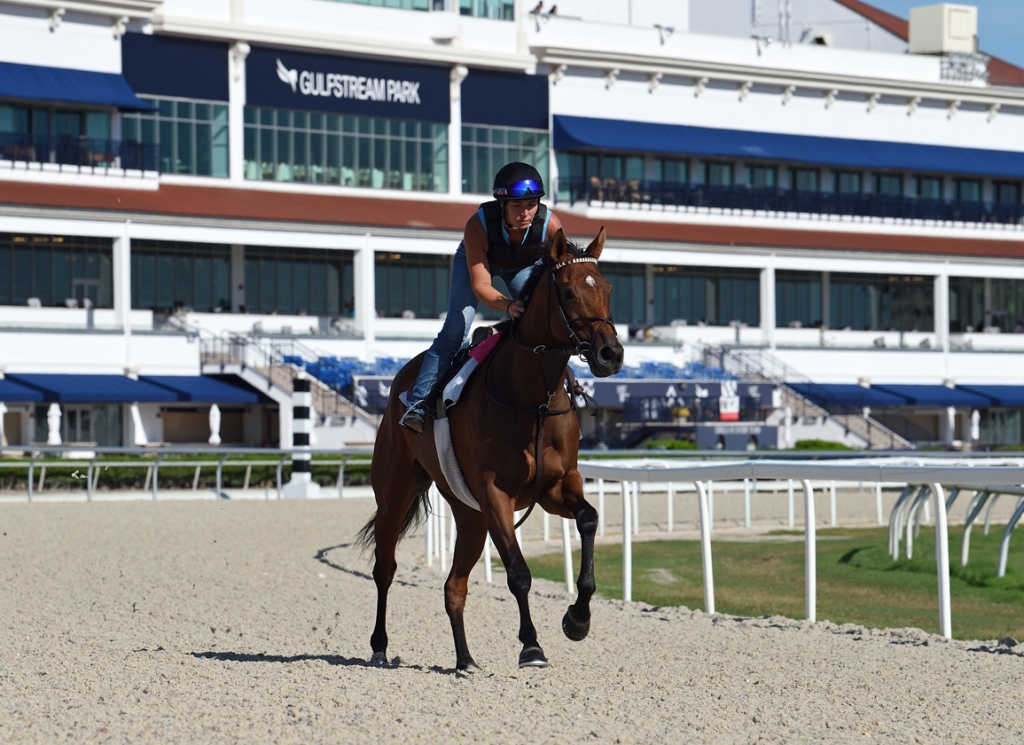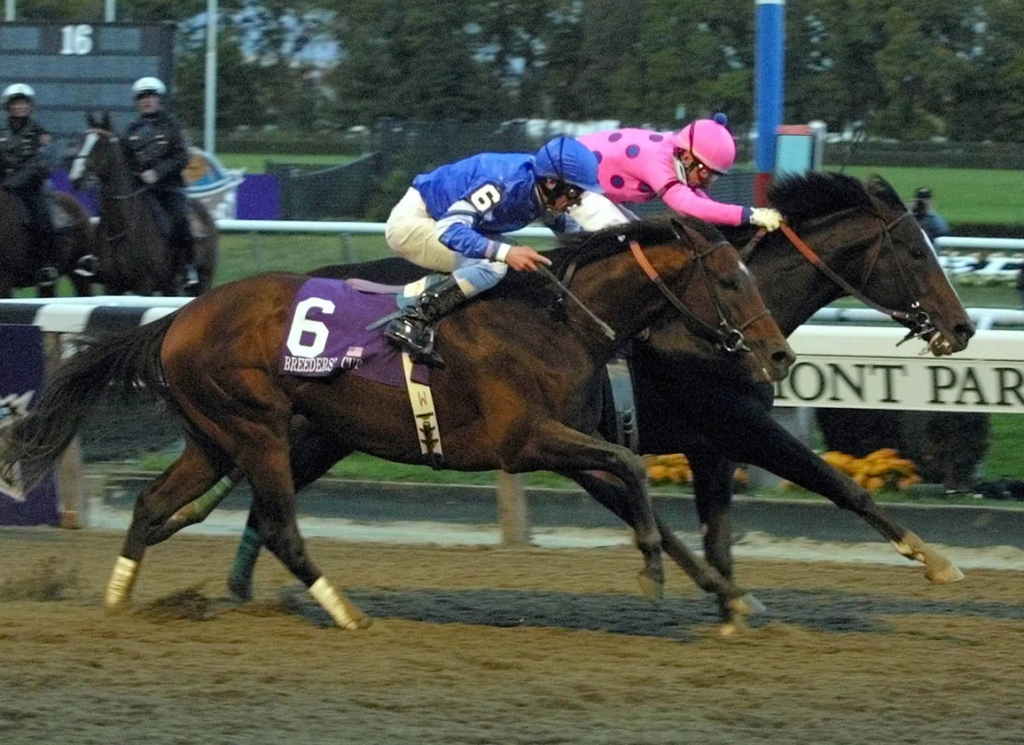The introduction of racing on Tapeta has presented bettors with new handicapping challenges and, hopefully, an all-weather path to betting riches at Gulfstream Park.
With four racing days in the books since races have been run over the Tapeta surface, it will come as a surprise to no one that horses with experience on turf and with turf pedigrees have been dominant in the vast majority of the 18 races conducted on the new all-weather track that was constructed on the former outer turf course.
How-the-race-was-won stats may be more relevant to handicappers, considering that there has been only one front-running winner thus far. Eleven winners rallied from mid-pack or farther back to win, while six horses prevailed after pressing or stalking the pace.
Amador Sanchez-trained Wow Tapit, who set the pace on his way to capturing a 5 ½-furlong maiden claiming race on Day 1, is also one of only two horses that won on Tapeta with no previous experience on turf (not counting first-time starter Cosmo Paul, who won Sunday's Race 3). Saffie Joseph Jr.-trained Strategy Queen graduated a few races later Thursday in a maiden special weight race on Tapeta after running twice on dirt. With a Tapeta-winning sister and a sire who was a multiple winner on all-weather, the daughter of Fed Biz's pedigree suggested that she would relish the going. Strategy Queen is one of four Tapeta winners that had raced on dirt in their previous starts.
Perhaps the most eye-opening development of the Tapeta Era thus far? The first 17 winners on Tapeta were saddled by 17 different trainers before Mark Casse doubled up in Sunday's last race with All Quality, who was racing on an all-weather track for the first time since winning her debut on Woodbine's all-weather track in 2019.
Ron Spatz saddled a veteran turf allowance runner Light Fury for an impressive mile-and-70-yard starter allowance score with his only Tapeta starter thus far.
“It reminds me of the old Calder. You run the same kind of normal fractions down the backside. The further you go, you lose a second. That's the way Calder always was,” Spatz said. “As long as they come back fine, that's great with me.”
Jockeys have done a pretty good job of spreading the wealth on Tapeta as well. Samy Camacho and Edwin Gonzalez lead all jockeys with three wins each. Jesus Rios and Miguel Vasquez each have two wins.
“It's not the same, but Tapeta is a lot like turf. I like the track. You don't have to be on the lead on this track. You can wait for the stretch,” said Camacho, who hadn't ridden in a race on Tapeta during his career prior to Thursday. “I think Gulfstream made a good change to have turf, Tapeta and dirt.”
The temptation to arbitrarily throw out the favorite may be eased somewhat by the fact that 11 favorites have visited the winner's circle after victories on Tapeta for a 60-percent strike rate.
Thursday's Rainbow 6 Jackpot Pool Guaranteed at $450,000
The 20-cent Rainbow 6 jackpot pool will be guaranteed at $450,000 Thursday at Gulfstream Park, where the popular multi-race wager went unsolved Sunday for the 14th racing day since a Sept. 10 mandatory payout produced multiple payoffs of $313,299.84
The Rainbow 6 jackpot is paid out when there is a single unique ticket sold with all six winners. On days when there is no unique ticket, 70 percent of that day's pool goes back to those bettors holding tickets with the most winners, while 30 percent is carried over to the jackpot pool.
The post Keeping Track Of Tapeta Trends At Gulfstream Park appeared first on Horse Racing News | Paulick Report.



